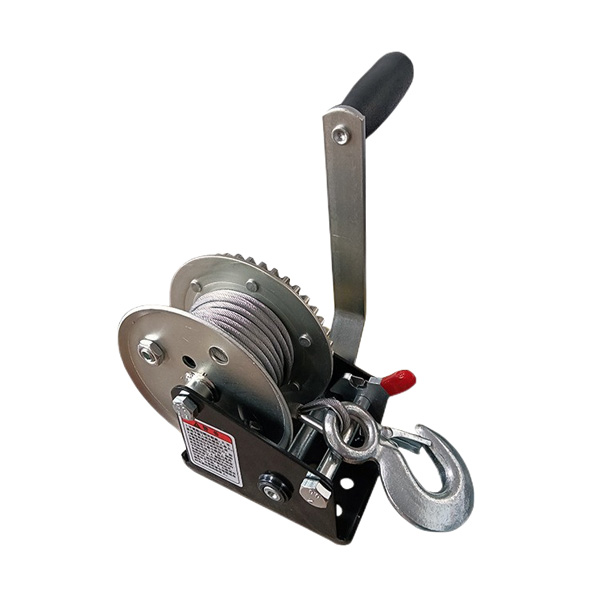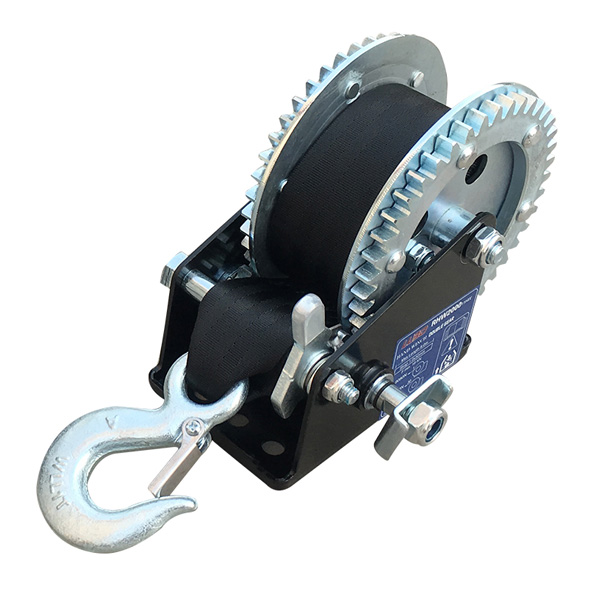
Introduction to Manual Winches
Manual winches are mechanical devices used tolift, pull, or secure heavy loads without relying on electricity or fuel. Commonly used in off-road vehicles, boats, trailers, and industrial applications, manual winches offer a reliable, cost-effective, and environmentally friendly alternative to electric or hydraulic systems. Their simplicity and versatility make them indispensable in scenarios where power sources are unavailable or limited.


Eco-Friendly Operation
One of the primary advantages of manual winches is theireco-friendly nature. Unlike electric or fuel-powered winches, manual winches do not consume electricity or fossil fuels, reducing carbon emissions and environmental impact.
Key eco-friendly benefits include:
1. Zero Energy Consumption: Operated entirely by human effort.
2. No Battery Dependence: Eliminates the environmental cost of battery production and disposal.
3. Reduced Carbon Footprint: Supports sustainable practices, particularly in remote or off-grid applications.
Advantages of Manual Winches
Manual winches provide several practical and operational benefits:
1. Reliability in Remote Locations: Without the need for electricity, manual winches work anywhere, including forests, mountains, and construction sites.
2. Low Maintenance: Fewer moving parts and no electrical components mean minimal maintenance requirements.
3. Cost-Effective: Lower initial investment compared to electric winches and minimal operational costs.
4. Durability: Built with robust materials like steel or heavy-duty alloys to withstand extreme loads and harsh environments.
5. User Control: Operators can control speed and tension manually, offering precision when lifting or pulling heavy loads.
Applications of Manual Winches
Manual winches are versatile tools used in various sectors:
· Off-Road Vehicles: Rescue stuck vehicles or tow trailers without relying on vehicle battery power.
· Marine Industry: Raise and lower anchors, sails, or small boats.
· Construction and Industrial Sites: Move heavy equipment or materials safely without electricity.
· Recreational Use: Hiking, camping, and outdoor activities where portable, eco-friendly solutions are needed.


Choosing the Right Manual Winch
When selecting a manual winch, consider:
1. Load Capacity: Ensure the winch can handle the maximum weight you intend to lift or pull.
2. Material Quality: Opt for corrosion-resistant steel or alloys for durability in outdoor conditions.
3. Gear Ratio: A higher gear ratio allows easier operation with less effort.
4. Mounting Options: Check compatibility with vehicle bumpers, trailers, or stationary mounts.
5. Safety Features: Look for braking mechanisms, locking pawls, and ergonomic handles to prevent accidents.
Tips for Safe and Efficient Use
· Always follow manufacturer instructions regarding load limits.
· Inspect cables or straps regularly for wear and damage.
· Keep the winch properly lubricated to ensure smooth operation.
· Use gloves and protective gear when operating under heavy loads.
· Ensure stable anchoring points to avoid accidents.
Conclusion: Sustainable and Reliable Lifting Solution
Manual winches provide asustainable, reliable, and low-cost solution for lifting and pulling applications. Their eco-friendly operation, durability, and versatility make them ideal for off-grid, industrial, and recreational uses. By choosing the right manual winch and following proper usage practices, users can enjoy efficient load handling while minimizing environmental impact.
Meta Description:
Discover the benefits of manual winches for eco-friendly, electricity-free operation. Learn about load capacity, applications, and tips for safe, sustainable lifting and pulling solutions.





